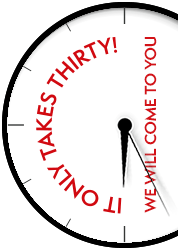Blog
How to Avoid and Treat Heat Illness in the Workplace

Australia’s climate and professions, such as welding or working in foundries, pose elemental risks of heat illness. It is the responsibility of the employer to reduce that risk and protect worker’s health.
What is heat stress, exhaustion and stroke?
Heat stress is the heat burden someone is subjected to.
The way our bodies cool down is by increasing blood flow to the skin, allowing the heat to be released. Where physical work is being done, this energy is instead diverted to the muscles, which means heat builds up in the body, instead of being released through the skin, leading to heat illnesses.
Both forms of heat illness – what is the difference between heat exhaustion and heat stroke?
Heat exhaustion often shows a milder, although serious, symptoms and is the build-up of heat stress, where the body has a normal to high internal temperature of up to 39C.
Heat stroke occurs when body temperature reaches 40C or above, is more severe and potentially fatal. It is a life-threatening condition that needs urgent first aid and medical attention.
Signs and Symptoms
Symptoms of health illness
When someone starts to experience heat illness, they will become uncomfortable in the heat, their skin will appear flushed with possible prickly rashes and they will sweat more profusely than normal for them. When mild, they may feel tired, weak or dizzy, have muscle cramping, be irritable and find it hard to work or concentrate.
Symptoms of heat exhaustion
As heat stress increases, they may develop a headache, low blood pressure, nausea, be clammy and have pale or flushed skin. People experiencing heat exhaustion could faint or vomit.
Symptoms of heat stroke
Beyond heat exhaustion, heat stroke is life-threatening. People may experience irritability, confusion, difficulty speaking, hot, dry skin (not clammy), and lose consciousness with potential seizures and cardiac arrest.
Treatment
At the first signs of heat illness, the first step is to move the person to a cooler place, in the shade or away from hot work and give them a drink cool (not cold) fluids – if available, a sports or electrolyte drink.
Watch their condition and if needed, call for medical help, depending on the severity of their condition – first aid officer, nurse, doctor or ambulance.
How to treat heat exhaustion
If symptoms of heat illness progress into heat exhaustion, after the first step above, it’s time to call for your workplace’s medical assistance with the following first aid steps:
- Loosen and remove unnecessary clothing/layers
- Sponge cold water/iced water to help cool the skin
How to treat heat stroke
If the symptoms of heat illness escalate quickly, or the above steps have not provided relief and the person’s body temperature goes beyond 39C, heat stroke requires medical attention.
- Follow DRSABCD action plan
- Immerse the person in a bath of cold/iced water, if not available, dip towels/fabric in iced water and place them on the person
- Apply cold packs/wrapped icepacks to neck, groin and armpit areas
- If the person is fully conscious and able to swallow, provide water
- Call 000 if the person has seizures, loss of consciousness or cardiac arrest
Steps to mitigate heat illness
- Heat illness workplace education
- Use heat protective PPE, light clothing and sunscreen
- Take breaks in the cool and shade
- Slowly acclimatise to working in hot environments
- Share the workload among staff
- Regular drinks of water
- Install and maintain ventilation, fans, blowers and chillers
- Maintain good overall health
- Look out for each other
Accumax
We stock a range of Coolworker products to help in the first aid for heat illness at the best value for money.
If you have more questions about how to mitigate heat exhaustion contact us today, or find out more about our Coolworker products.



